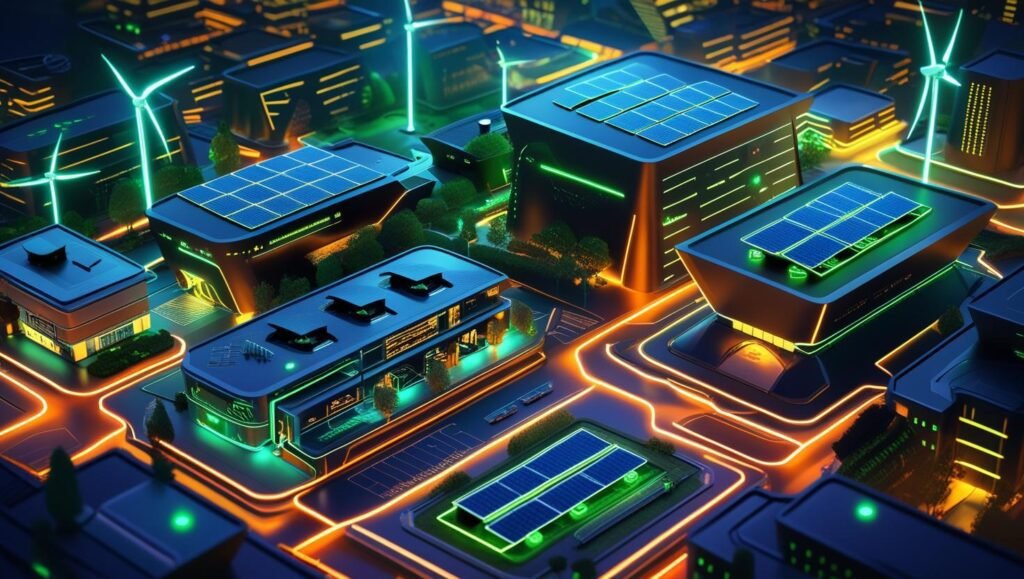How Smart Sensors Are Revolutionizing Energy Efficiency

Introduction
Every day, we use energy—at home, at work, and everywhere in between. But have you ever wondered how we can use less energy and still live comfortably? That’s where Green IoT comes in.
Green IoT uses smart technology, like sensors and devices, to help us save energy in smart ways. It’s making a big difference in how we heat our homes, power our buildings, and even run our cities. In this post, we’ll explore how smart sensors are changing the game when it comes to energy efficiency—and how it all connects to a greener, better future.
What Is Green IoT?
Green IoT means using the Internet of Things (IoT) in a way that helps the environment. IoT includes devices that talk to each other over the internet—like smart lights, thermostats, and even fridges.
When these devices are designed and used to save energy, reduce waste, or lower pollution, that’s Green IoT in action.
Smart sensors are a big part of this. They help machines, buildings, and even cities make better choices by collecting and sharing information. And they do it in real-time.
How Smart Sensors Help Save Energy
Smart sensors are tiny but powerful. They collect data and send it to other devices or systems that make decisions. Here’s how they help save energy:
1. Turning Off Devices When Not in Use
Many smart sensors can tell when no one is in a room. They turn off lights, air conditioning, or heaters automatically. This simple step can save a lot of power every day.
2. Learning Your Habits
Smart thermostats use sensors to learn when you’re home or away. Over time, they adjust temperatures based on your routine, which saves energy without you even noticing.
3. Detecting Problems Early
Sensors can find leaks in water or air systems before they become big problems. Fixing these early stops energy waste and saves money.
4. Helping Buildings Use Energy Better
Big buildings use a lot of power. Smart sensors track how energy is used across a building. This helps building managers find ways to cut down without affecting comfort.
5. Making Cities Smarter
Cities are using smart sensors to control traffic lights, streetlights, and even trash collection. This not only saves energy but also makes life smoother for everyone.

Real-Life Example: A Smart Office Building
Imagine an office building that uses smart sensors everywhere. Here’s what it might look like:
- Lights turn on only when someone enters a room.
- Windows open or close automatically based on outside weather.
- Elevators run more efficiently by learning traffic patterns.
- Heating and cooling systems adjust based on room use.
This isn’t science fiction—it’s happening now. And it’s all part of the Green IoT movement.
Benefits of Using Smart Sensors with Green IoT
Let’s break down the biggest benefits:
- Lower energy bills for homes and businesses.
- Less pollution from power plants, which helps the planet.
- More comfort and convenience for users.
- Longer life for machines and systems due to early detection of issues.
- Smarter decision-making with real-time data.
What’s Next for Green IoT?
Green IoT is growing fast. As more people use it, the technology will become smarter and cheaper. In the future, we may see:
- Whole cities run by smart, green systems.
- Cars and roads that talk to each other to save fuel.
- Farms that use less water and energy thanks to sensors.
The more we invest in Green IoT, the bigger the impact we’ll see.
Why This Research Matters
You’ve seen how smart sensors work and the benefits they offer. But what if you want to understand the science behind it? Or learn how this technology is evolving globally?
We’ve put together a detailed research paper that dives deeper into:
- The technology powering smart sensors.
- Real-world case studies and data.
- The environmental impact of Green IoT across industries.
If you’re curious about the full picture, we invite you to read the research paper below.
[Read the Full Research Paper]




